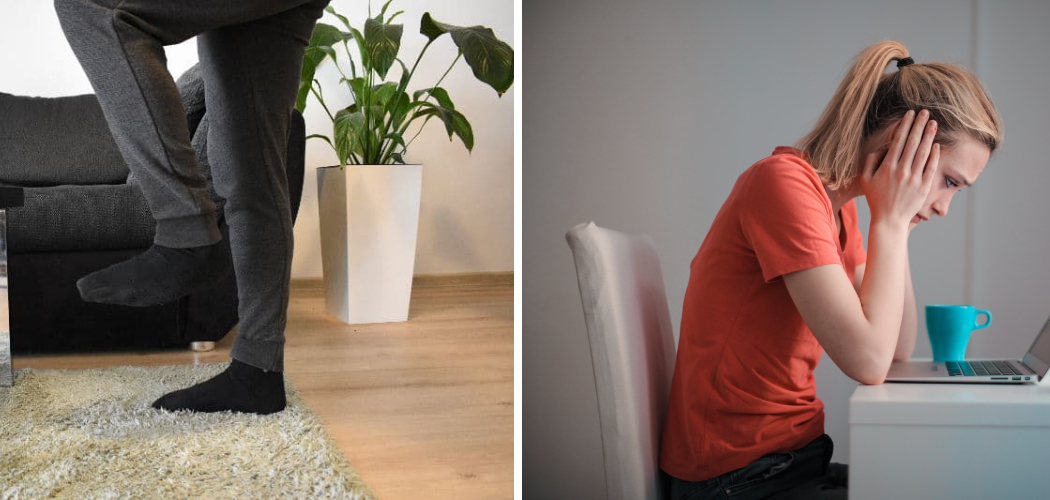The sound of footsteps or other impacts from upstairs floors can be incredibly disruptive and annoying. Impact noise is created any time somebody walks on a hard surface, such as a wooden floor, which creates vibrations that travel down through the building structure to your floor.
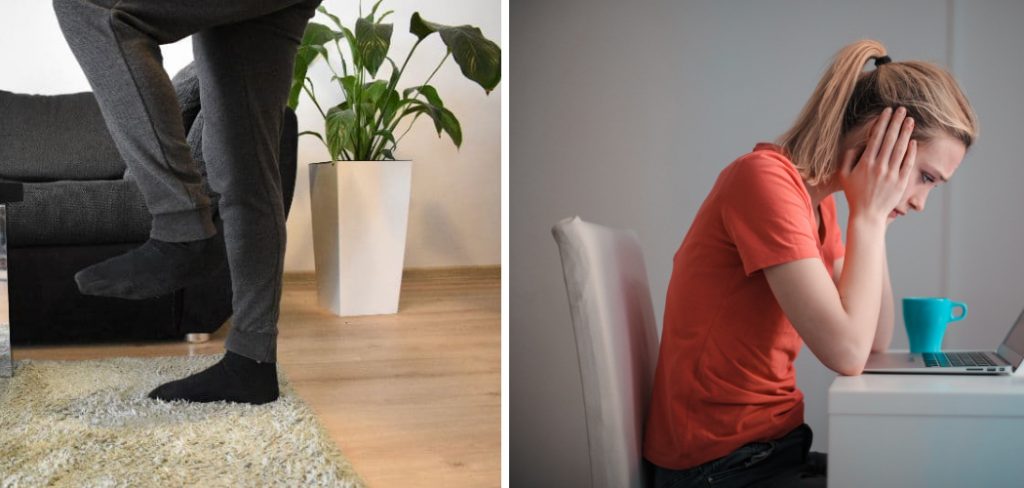
This noise can be especially problematic in multi-family dwellings like apartments where the walls separating units are often thin, and sound travels easily.
One of the major advantages of reducing impact noise from upstairs floors is that it can greatly improve the quality of life for those living in multi-story buildings.
It can reduce distractions, minimize stress levels, and provide a quieter living environment that allows occupants to relax without constantly being disrupted by noises coming from above. You can find step-by-step instructions on how to reduce impact noise from upstairs floors in this blog article.
Tools You Will Need
- Underlayment
- Acoustic insulation batts
- Acoustic wedges or tiles
- Carpet padding or carpet foam underlayment
- Wall soundproofing panels
- Resilient channel installation
- Mass Loaded Vinyl (MLV)
- Door Sweeps and Seals
- Green Glue Compound
- Double drywall installation
- Soundproof paint
- Acoustic caulk or sealant
Step by Step Processes for How to Reduce Impact Noise From Upstairs Floors
Step 1: Inspect the Floor
To reduce impact noise, start by giving your floor a thorough inspection. Check for any weak spots or areas that may be prone to noise transmission. If you find any, repair them with proper materials such as acoustic caulk or sealant.
Step 2: Install Carpet and Padding
Installing carpet and padding on the subfloor will create an effective barrier between the floors. Choose a carpet with a high density and thickness to reduce sound transmission. Adding acoustic matting to the floor will provide an additional layer of soundproofing. Many types are available, so choose one that best fits your needs.
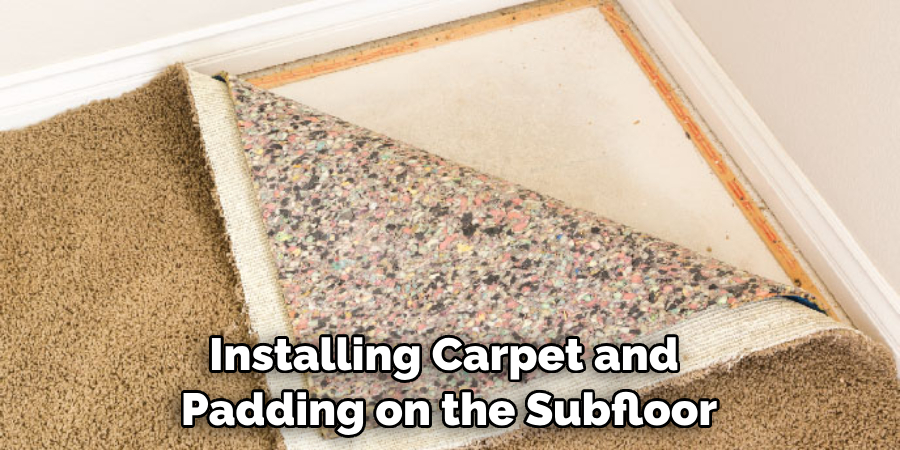
Step 3: Use Acoustical Wall Coverings
Installing acoustical wall coverings on the walls of your room will help absorb sound and reduce noise transmission. Installing acoustic foam panels in the walls and ceiling can provide a barrier to sound and absorb it.
Step 4: Use Soundproof Curtains or Drapes
Hanging thick, soundproof curtains or drapes on the windows can also help reduce sound transmission. Choose a curtain or drape made from heavy material such as velvet or wool. Installing insulation in the walls and ceiling of your room will create an effective noise barrier. Make sure to choose an insulation material that is specifically designed for soundproofing.
Step 5: Install Acoustic Doors and Windows
Replacing your doors and windows with acoustic versions will help reduce noise transfer from one room to another. For best results, choose ones with a solid core and weather stripping around the edges. Adding soundproof blankets to your walls and windows will help absorb sound. Choose blankets with thick, dense material for maximum noise reduction.
Step 6 Reinforce Wall Studs
Installing extra wall studs in the walls of your room can provide additional support and reduce noise transmission. Make sure to use materials that are specifically designed for soundproofing.
By following these steps, you can significantly reduce the impact noise from upstairs floors in your home. With time and effort, you can create a quieter living environment for you and your family.
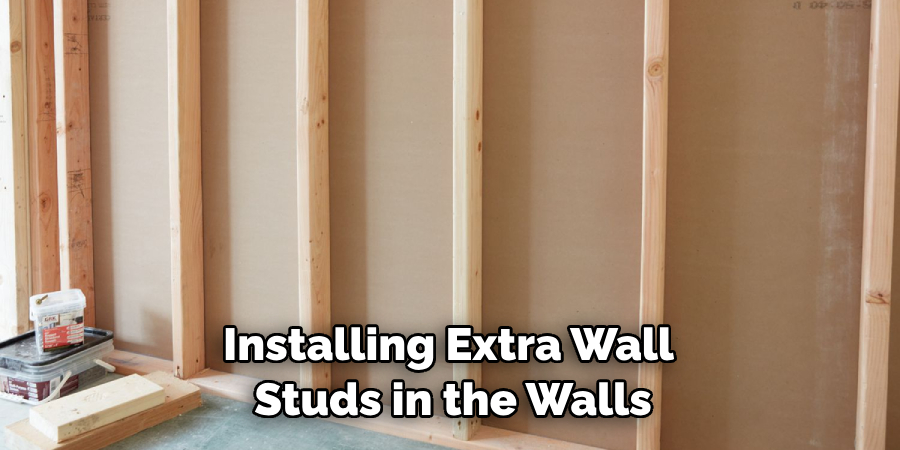
Tips for How to Reduce Impact Noise From Upstairs Floors
- Place carpeting, rugs, or acoustic mats on all hard floors above and below. Not only does this help reduce noise, but it also adds comfort to high-traffic areas in the home.
- Install solid core doors with heavy-weighted door sweeps to minimize sound vibrations. This will also help keep cold air from seeping into the room.
- Install acoustic tile ceiling on any upstairs floor to absorb sound vibrations from above.
- Apply soundproofing materials, such as foam insulation, along the room’s perimeter and around windows and doors. This will help keep noise from entering or leaving the space.
- Hang thick curtains on all windows to reduce outside noises and help with room temperature.
- Place acoustic foam paneling on walls and ceilings to dampen sound waves.
- Install a floating floor system between the floors of two levels to reduce sound transmission from one level to another.
- Get an area rug specifically designed for noise reduction, combining dense felt and rubber layers to absorb sound vibrations. This can be placed beneath furniture to reduce footstep noise from upstairs rooms further.
These eight steps will help reduce impact noise and improve the quality of living in your home.
What Types of Soundproofing Materials Are Most Effective at Reducing the Impact Noise From Upstairs Floors?
Soundproofing materials can be an effective solution when it comes to reducing the impact noise from upstairs floors. Soundproofing materials are designed to absorb and deflect sound waves, preventing them from traveling through walls and ceilings. The most commonly used soundproofing materials include:
- Mass Loaded Vinyl (MLV): MLV is a heavy rubberized vinyl material perfect for blocking sound. It can be installed over walls, ceilings, and floors to stop airborne noise from passing through.
- Acoustic Foam: Acoustic foam is a porous material made of polyurethane or melamine that absorbs mid-to-high frequency sound waves. These materials are especially effective at reducing impact noise when placed on ceilings or walls.
- Soundproof Drywall: Soundproof drywall is a type of gypsum board designed to be thicker and denser than regular drywall, making it better at blocking sound altogether. This material can also help reduce noise from upstairs floors when properly installed.
- Insulation: Insulation materials such as cotton, fiberglass, and mineral wool block sound. By adding insulation to walls and ceilings, you can help reduce the impact of noise from upstairs floors.
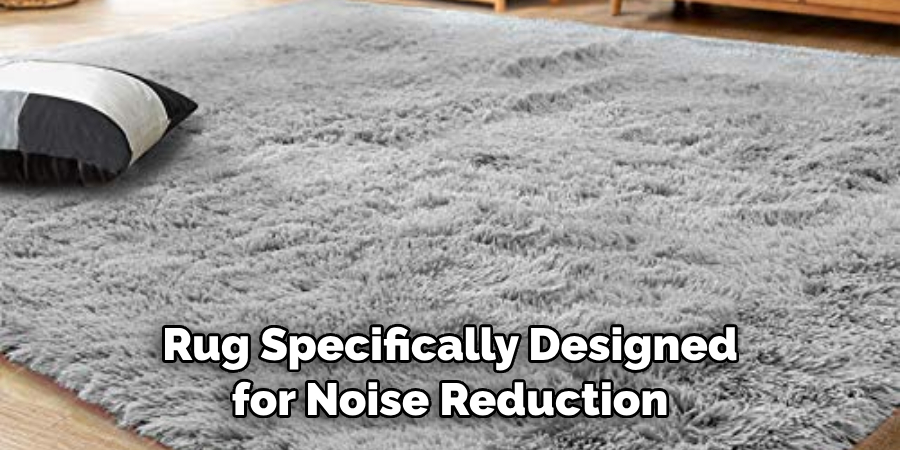
By using these soundproofing materials, you can significantly reduce the amount of impact noise coming from upstairs floors. For best results, install them correctly and in the correct locations for optimal soundproofing. With the right materials and proper installation, you can dramatically reduce the impact noise from upstairs floors.
Are There Any Specific Techniques for Soundproofing Your Upstairs Floor That You Should Be Aware of?
There are various techniques for soundproofing an upstairs floor, depending on your needs and the noise you’re trying to reduce. Here are a few methods that may help:
- Add Mass: Installing thicker floor or ceiling materials, such as gypsum board or carpet padding, can reduce noise from footsteps and other activities.
- Add Absorption: Materials like cork, acoustic panels, or foam tiles can absorb sound waves, reducing noise levels.
- Install a Ceiling Barrier: A suspended ceiling between floors can act as an effective barrier to reduce impact noises from upstairs activities.
- Use Soundproofing Tape: Installing acoustical tape around doors, windows, outlets, and vents can help reduce airborne sound.
- Install a Soundproofing Mat: A soundproofing mat between the upstairs floor and ceiling can absorb noise from impact sources like footsteps.
These are just a few techniques you can use to reduce impact noises from upstairs floors. Be sure to research and consult with a professional if you’re unsure about the best methods for soundproofing your residence.
What Maintenance is Required After Soundproofing Your Upstairs Floor to Keep the Noise Reduction Effect?
The most important aspect of maintaining a soundproofed upstairs floor is regularly inspecting the flooring. Make sure there are no gaps, large or small, between the floorboards and any other components of your soundproofing system.
Over time, these gaps can become larger and weaken the effectiveness of the soundproofing material. You should also check for any wear and tear on walls, ceilings, doors, windows, and other surfaces that could let in noise.
Another important aspect of maintaining soundproofing is ensuring the floor remains clean and free from dust, dirt, and debris. This will help prevent airborne particles from entering your home and disturbing the acoustic insulation.
Vacuuming or sweeping the floor regularly will also help reduce the impact of footsteps and other sources of impact noise. Finally, it is important to inspect the soundproofing material itself for signs of damage regularly. Any tears or punctures should be repaired as soon as possible.
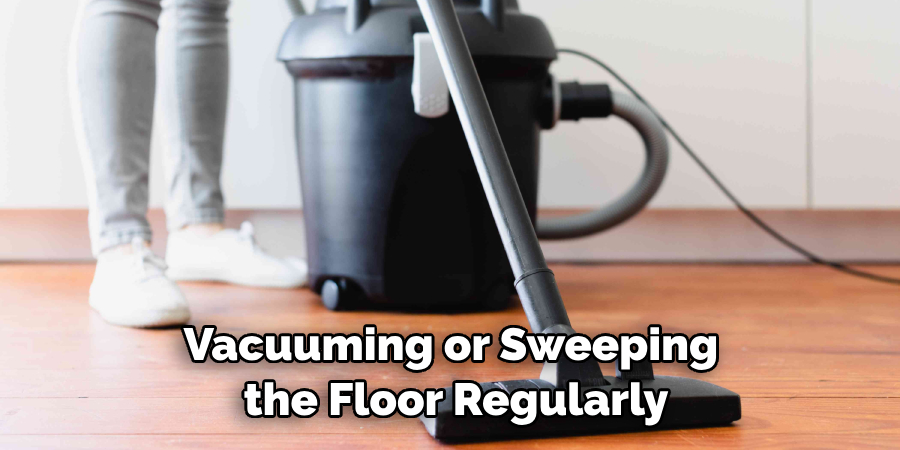
How Long Will the Soundproofing of Your Upstairs Floor Last Before You Need to Replace It?
The life expectancy of soundproofing for an upstairs floor depends on various factors, including the type and quality of materials used, how frequently and heavily the area is used, and the local climate. Soundproof foam insulation panels are one popular option for reducing impact noise from upstairs floors.
Generally, such foam insulation has a lifespan between five to fifteen years, depending on the quality of the foam used. To ensure maximum life expectancy, these panels should be periodically inspected for signs of wear and tear and replaced as needed.
Other materials and installation methods are also available to soundproof your upstairs floor. For example, resilient barriers are lightweight material placed between two layers of drywall to reduce impact noise from upstairs floors. Resilient barriers also come in various thicknesses and densities, affecting their expected lifespan. In general, resilient barriers last between five to fifteen years as well.
Conclusion
In conclusion, reducing impact noise from upstairs floors is a complex problem that requires careful consideration of the environment and materials used in construction. Several strategies can be employed to reduce this type of noise, such as adding soundproofing material to the floorboards or ceiling, installing acoustic mats under carpets, using double-glazed windows, and expanding your home’s insulation.
Homeowners can also use soundproofing curtains and fabrics, specialized door sealants, and foam pads to dampen noise. I hope this article has been beneficial for learning how to reduce impact noise from upstairs floors. Make Sure the precautionary measures are followed chronologically.
